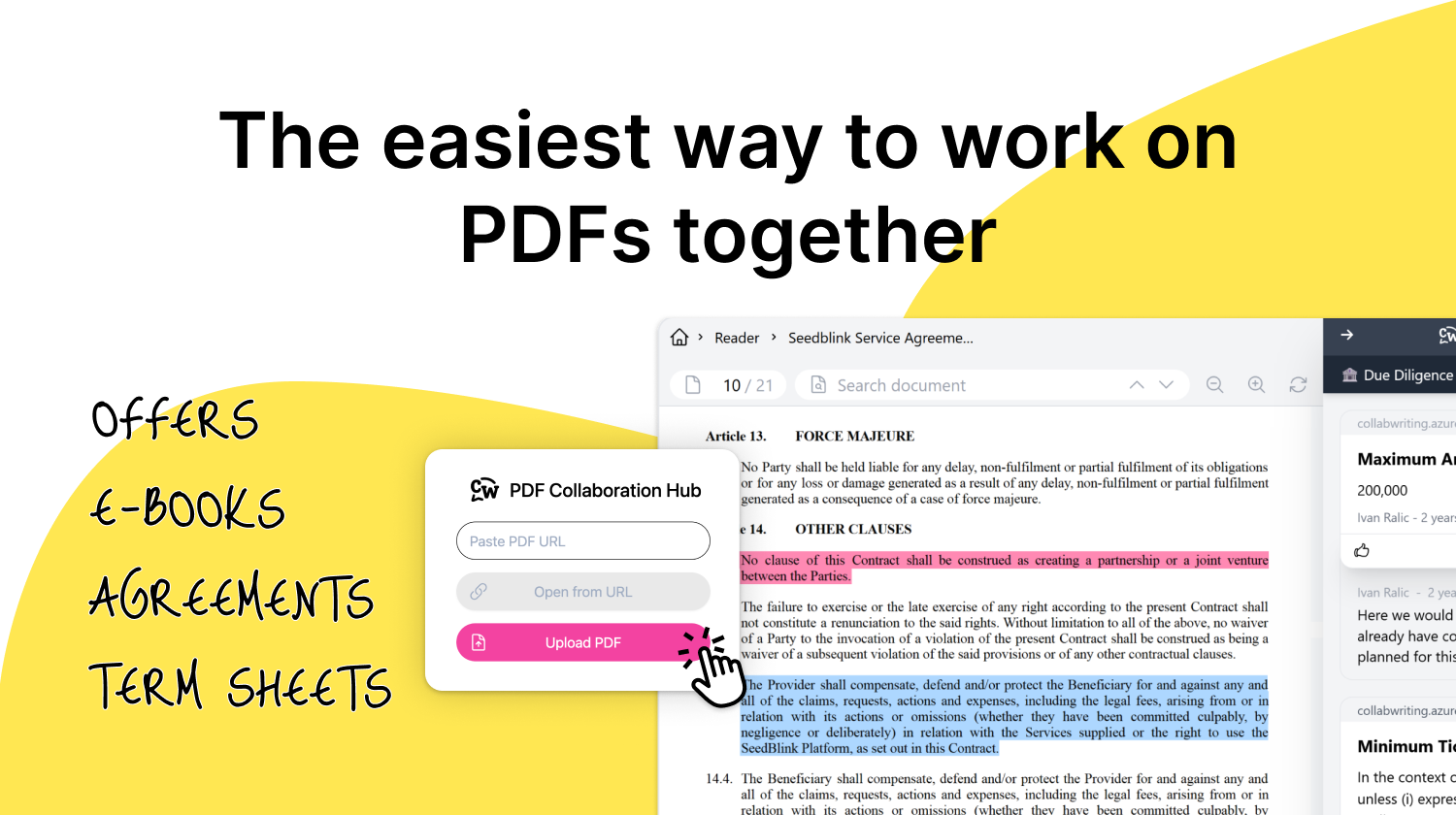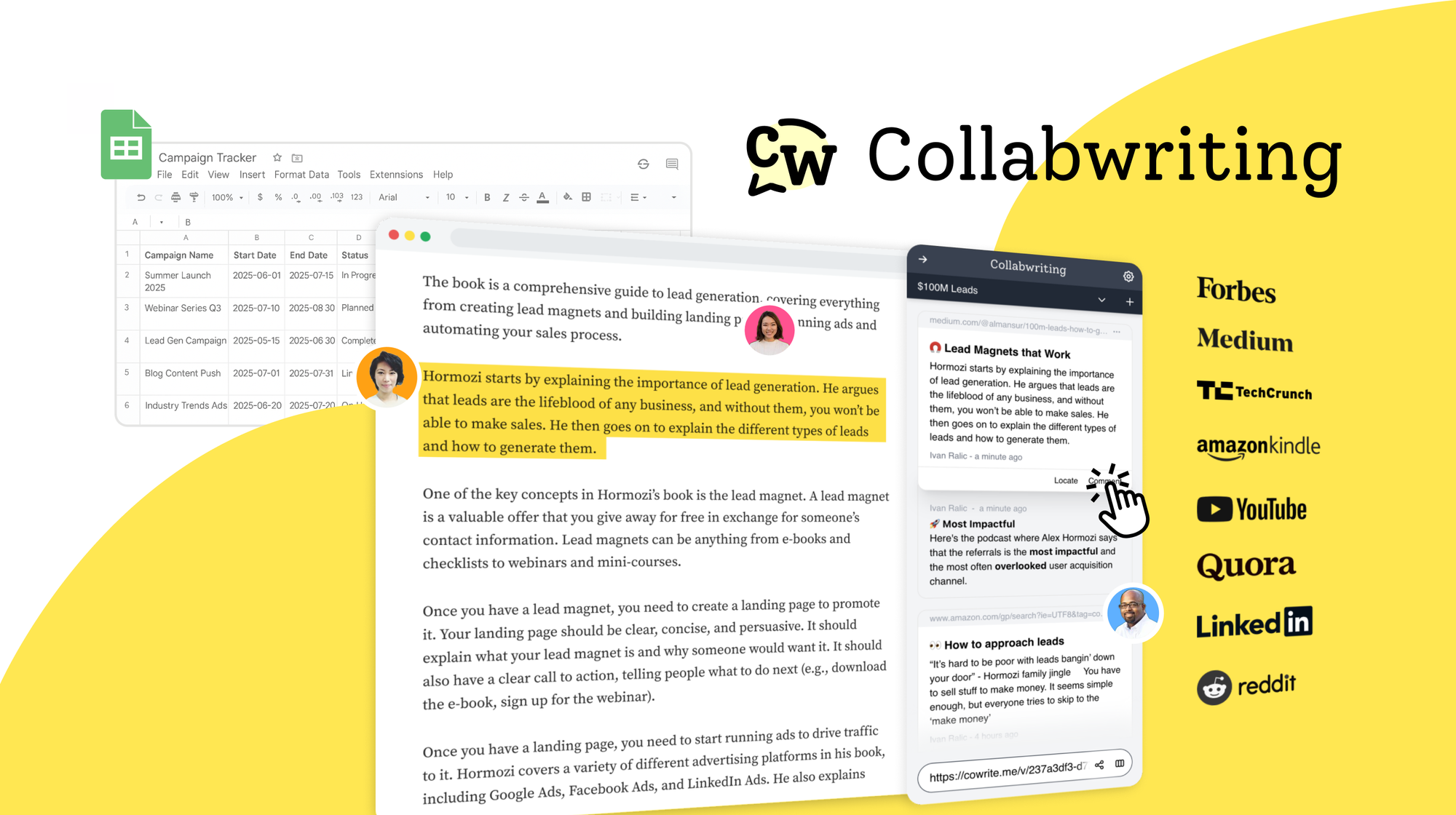Collaborative writing is a great way to create compelling content, especially for content writers. It lets multiple writers or editors work together - brainstorm ideas and compose a finished piece.
But to succeed, collaborative writing needs skill and a good approach.
In this blog, we’ll cover key elements of effective teamwork and share tips to help you get the best results. You will learn how to:
- Streamline workflow with project management tools
- Handle conflicts while keeping the team positive
- Celebrate success to build a supportive environment
Whether you’re an experienced writer or just starting out with collaborative projects, this guide will give you the knowledge and tools to make your next group writing endeavor a success.
Why Collaborative Writing Matters
Collaborative writing helps teams create better ideas, stronger content, and builds skills faster.
When writers work together, the final product benefits from multiple viewpoints and expertise.
Tips for successful collaboration
Successful collaborative writing doesn’t happen by chance. It requires clear planning, open communication, and a shared commitment to the project’s goals.
Let's jump into practical steps.
Define Your Project's Goals and Objectives
Before starting, be clear about what you want to achieve. Identify your target audience, decide on tone and style, and set the scope of the project.
As George Harrison said, “If you don’t know where you’re going, any road will take you there.”
Knowing your goal keeps everyone focused and aligned.
Identify Roles and Responsibilities
Assign clear roles like strategist, researcher, drafter, editor, and reviewer.
Each team member should know what they are responsible for to avoid confusion and overlap.
Think of this like fitting puzzle pieces together to form a complete picture.
Collaborate on Ideas Through Brainstorming
At the start of the writing process, bring your team together for a fun and focused brainstorming session.
This is the perfect moment to define your main idea and decide on the direction of your project. Everyone can share their thoughts, spark new ideas, and align on a shared vision.
As you brainstorm, make space for each person’s input. Great collaborative writing comes from listening to one another and building on different perspectives. It’s normal to disagree sometimes but that’s not a bad thing.
With a bit of critical thinking and open discussion, you’ll find common ground and shape a stronger, more well-rounded piece together.
Good teamwork thrives on respect and collaboration, even when opinions differ.
Choose Your Writing Process
Collaborative writing means working together as a team to create one shared piece of content. But with so many ways to do it—how do you pick the right one?
The answer is simple: let your team choose how the writing happens.
Give your team the freedom to work in a way that fits them best. Maybe that means writing together in real-time, or maybe it means working separately and bringing it all together later. There’s no one right way - just the one that works best for you and your team.
This not only makes the writing process more enjoyable but also helps to increase productivity and produce higher-quality writing that meets your project's goals and objectives.
Pick the Right Collaborative Writing Tools
Your choice of software should fit your team’s needs and budget.
Some popular tools include:
- Google Docs: real-time collaboration on documents.
- Microsoft Word 365: supports live editing via URL.
- Collabwriting: collects data, ideas, and feedback in one searchable place.
Try different options and find what works best for your team. Once you find the right platform, you can use it to create an effective collaboration system.
Working Alongside Editors
Collaboration doesn’t stop with your writing team.
It also includes working closely with your editor to turn your draft into something you’re both proud of. Your editor is a key part of the process, not just someone who fixes mistakes.
With group writing tools, it’s easier than ever to edit together in real time. This saves time and helps you take full advantage of your editor’s feedback. Their suggestions can help you improve your work, polish the final version, and get it ready to publish with confidence.
Companies that promote collaboration and communication at work have reduced employee turnover rates by 50% and employees are 17% more satisfied with their job when they engage in collaboration at work.

Collabwriting - Shareable Notes on Web Pages and PDFs
Collabwriting allows you to gather all your online sources in one place. Just highlight, save, and collaborate with anyone on any content you find online.
Final Notes
Collaboration allows you to learn from others, refine your critical thinking skills, and enhance your overall communication abilities. With the right approach, this process can help you create a truly outstanding piece of writing that you can be proud to showcase.
Remember, 75% of employees value collaboration, yet many companies still struggle with it.
Therefore, don't be afraid to team up with other writers and explore what you can achieve together.




![The Best Tool for Collaborative Research in Content Marketing Teams [2026]](/content/images/2025/12/image--5-.png)

![5 Tools Marketers Use to Organize Research - Compared [2026]](/content/images/2025/11/cover-4-1.png)

![Build Credibility in Research: Smart Way to Verify Information and Track Sources Easily [2025]](/content/images/2025/10/covers-for-blog--7--1.png)

![How Marketers Can Turn LinkedIn Content into Collaborative Research [2025]](/content/images/2025/10/covers-for-blog--8-.png)
![Best Readwise Alternative for Personal & Team Research [2026]](/content/images/2025/09/Frame-814--3-.png)

